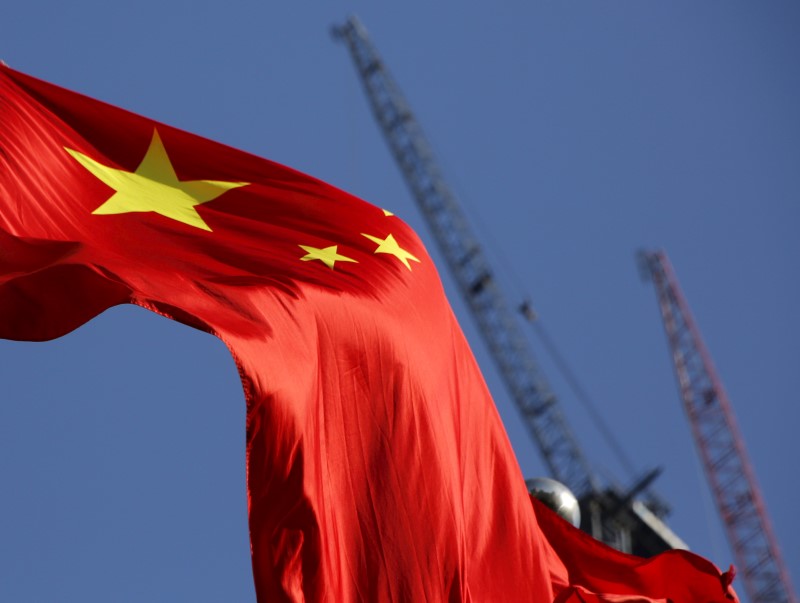(Bloomberg) -- China’s cabinet signaled that a reduction in the amount of funds banks have to hold in reserve is on the way, in a move aimed at releasing cash into the slowing economy.
The State Council called for the “timely” use of tools including broad and targeted reserve-ratio cuts to support the economy, according to a statement following a meeting chaired by Premier Li Keqiang.
The central bank usually follows such requests from the State Council. The People’s Bank of China last made a broad cut to the required reserve ratios in January, after a similar announcement by the State Council meeting in December. The same measure was reduced for rural lenders in May.
“It’s very likely a RRR cut and a targeted RRR cut will come in September,” said Wen Bin, a researcher at China Minsheng Banking Corp. in Beijing. “A full cut to banks’ reserve ratio is needed to make sure of effective financial support to economic growth, as the global economy slows and domestic consumption and investment face headwinds.”
The statement comes as a growing number of economists cut their forecasts for gross domestic product growth in 2020 to below 6% as a result of increasing risks from the tariff war with the U.S. Bank of America’s Helen Qiao and others warning that the government’s current approach to stimulus has so far proved insufficient. Earliest indicators compiled by Bloomberg showed the economy slowed further in August.
“There seems to be some adjustments in the policy setting,” and the next easing combination could be some traditional tools such as cuts in the reserve ratios and mid-term lending rate with counter-cyclical measures including the front-loading of local government bonds, said Tommy Xie, economist at Oversea-Chinese Banking Corp. Bank in Singapore. “Monetary policy is increasingly leaning toward an easing bias.”
While the announcement could come at any time, if the PBOC decides to cut the RRR this month the actual reduction would likely take effect on the 15th or 25th. Along with the 5th day of each month, this is when banks adjust their holdings to ensure they are in compliance with the reserve regulations.
Sept. 15 is a Sunday this year, so the actual implementation might be delayed to the Monday if that’s the date the PBOC chooses. There is also a risk the mid-autumn holiday on Sept. 13 may delay some of the clearing work, so the RRR cut could start from Sept. 25.
“The PBOC may cut the reserve requirement ratio for all banks by 50 basis points as soon as this week,” said Xing Zhaopeng, a markets economist at Australia & New Zealand Banking Group Ltd. “With the reduction, the central bank aims to inject cheaper funding into the banking system, reduce financial institutions’ funding costs and guide the loan prime rate lower.”
The move would add 800 billion yuan of liquidity, with some 200 billion yuan of the cash being used to repay maturing MLF, he said. The yield on China’s 10-year government bonds will fall below 3% in the near term as a result. China’s GDP growth will be around 6.1% in the fourth quarter, and will stay above 6% next year due to the easing measures, Xing said.
In addition to the RRR cut, the cabinet called for an acceleration of the issuance of so-called special bonds by local governments. The bonds are mostly used to pay for infrastructure spending, and will lend support to the economy which faces downward pressure from the complex external environment, according to the statement.
Funds raised via local government special bond sales can be invested in sectors including transport, energy, agriculture and forestry, vocational education and medical care in 2020, while projects such as land reserve and property will be prohibited, according to the statement.
(Update to add economist comments, possible RRR cut dates.)
